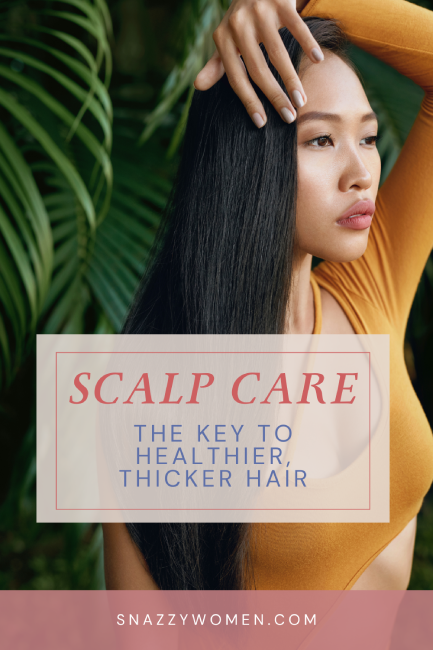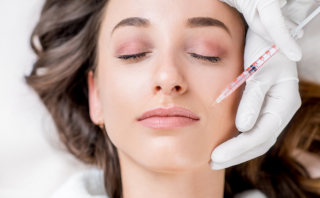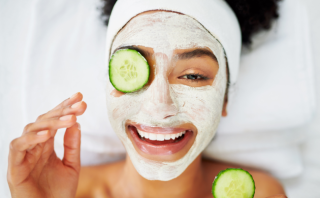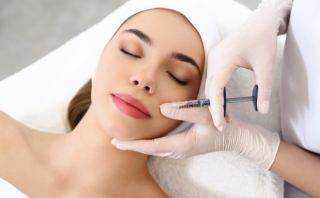Thicker, healthier hair isn’t just about finding the right styling products or splurging on expensive treatments — it’s about starting from the very root. A healthy scalp is essential to achieving the hair of your dreams. In this article, we’ll explore the science behind scalp health, identify the signs of an unhealthy scalp, share effective scalp care practices, and discuss when it’s time to seek professional help.
The Science of Scalp Health
Your scalp is the foundation for hair growth. When it’s healthy and balanced, your hair has the best conditions to grow. Here’s the lowdown on what makes your scalp tick:
Hair Follicles
Hair follicles, the structures responsible for producing hair, go through three phases:
- Growth (anagen)
- Transition (catagen)
- Rest (telogen)
A healthy scalp provides the necessary nutrients and environment for this cycle to progress uninterrupted. If your scalp environment is unhealthy, the hair follicle cannot perform optimally, potentially leading to stunted hair growth or even hair loss.
Sebaceous Glands
Sebaceous glands produce sebum, an oil that keeps your scalp hydrated. Too much sebum can clog pores and lead to greasiness, while too little causes dryness and irritation.
These glands are crucial for maintaining the scalp’s moisture balance, but when their production becomes imbalanced, it can contribute to scalp conditions like dandruff, psoriasis, or seborrheic dermatitis.
The Scalp Microbiome
Your scalp hosts a bustling community of microorganisms. These include bacteria and yeasts, which are important in maintaining scalp health. When balanced, these microbes keep your scalp healthy, preventing harmful overgrowth that could lead to dandruff, inflammation, or even hair loss.
Disruptions in the microbiome, often due to harsh chemicals or fungal imbalances, can cause scalp conditions like seborrheic dermatitis, which leads to flaking and irritation.
Signs of an Unhealthy Scalp
Your scalp often provides clues when it’s not in its best condition. Knowing these signs can help you address problems early and avoid long-term hair damage.
Hair Shedding
While some hair shedding is normal, excessive hair loss may signal that your scalp isn’t supporting healthy hair growth. Oxidative stress and inflammation are common culprits.
If you’re noticing excessive hair shedding, it may be time to reassess your scalp care regimen or consider hair loss treatments like minoxidil. These treatments stimulate hair follicles and improve growth, especially when paired with a comprehensive scalp care routine.
Persistent Itching
Constant itching may be a sign of dryness, product buildup, or inflammatory conditions such as seborrheic dermatitis. This condition is often linked to an overgrowth of Malassezia fungi. Scratching the scalp frequently can lead to further irritation or even infection, making it important to address the underlying cause rather than just the symptom.
Flaking
Visible white flakes can indicate dandruff, which results from a combination of scalp oil and fungal activity. Severe flaking might require targeted treatments to restore microbial balance. Dandruff can often be managed with medicated shampoos, but persistent or severe flaking may need a more customized solution to prevent it from becoming a recurring issue.
Excessive Greasiness
Overactive sebaceous glands may cause excessive oiliness, leaving your scalp greasy soon after washing. This can lead to clogged pores and hinder hair follicle function, leading to breakouts or even hair thinning. Using the right balance of cleansing products can help manage oil production without over-drying or irritating the scalp.
Redness or Tenderness
Inflammation or redness can indicate irritation, infection, or underlying conditions like psoriasis or seborrheic dermatitis. These conditions can sometimes cause discomfort or pain. Consulting a professional to rule out any serious conditions is important if redness or tenderness persists.
The Basics of Scalp Care
Effective scalp care doesn’t require an elaborate routine — just consistency and the right techniques. Here’s how you can nurture your scalp for healthier, thicker hair:
Cleanse Appropriately
Washing your hair too often can strip your scalp’s natural oils, while infrequent cleansing can cause buildup. Wash your hair every two to three days and opt for a gentle, sulfate-free shampoo that suits your scalp type.
Exfoliate Periodically
Exfoliation removes dead skin cells and buildup that regular shampooing might miss. Use scalp scrubs or exfoliating shampoos to improve scalp turnover and circulation.
Hydrate and Nourish
Dryness can lead to irritation and inflammation. Moisturize your scalp with oils like argan or tea tree oil, and use hydrating masks for extra nourishment.
Maintain a Healthy Microbiome
Harsh chemicals can disrupt the delicate ecosystem on your scalp. Stick to products that nourish your scalp’s microbiome instead of stripping it.
Protect Your Scalp from Sun Damage
Just like your skin, your scalp is susceptible to UV damage. Wear hats or use hair products with built-in SPF when spending extended time outdoors.
When to Seek Professional Help
While many scalp issues can be managed with at-home care, some require professional intervention. Here’s when you should consult a dermatologist or trichologist:
Persistent Symptoms
If dandruff, itching, or redness persists despite trying over-the-counter solutions, a professional evaluation is necessary. Your doctor can determine the cause of your symptoms and prescribe appropriate treatment.
Significant Hair Loss
Excessive or sudden hair shedding could indicate a more serious condition that requires a medical evaluation. Early diagnosis and treatment can prevent further loss.
Painful or Inflamed Scalp
Severe inflammation or painful patches might signal infections or autoimmune conditions that require medical attention. If your scalp is persistently painful or you notice areas of infection, it’s important to seek professional care to address potential underlying conditions.
In Conclusion
Taking care of your scalp is the foundation for achieving thicker, healthier hair. By understanding the factors that affect scalp health, recognizing the signs of imbalance, and incorporating effective care practices, you can create an optimal environment for your hair to thrive.
Whether you’re dealing with specific scalp concerns or simply aiming for healthier hair, prioritizing scalp health is essential for long-lasting results.





